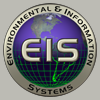
|
Lane Owsley Principal Engineer lane@apl.washington.edu Phone 206-685-3592 |
Research Interests
Image, Array, and Speech Processing; Feature Extraction and Classification
Department Affiliation
 |
Environmental & Information Systems |
Education
B.S. Engineering, Brown University, 1991
M.S. Electrical Engineering, University of Washington, 1994
Ph.D. Electrical Engineering, University of Washington, 1998
|
Publications |
2000-present and while at APL-UW |
A technique for adjusting Gaussian mixture model weights that improves speaker identification performance in the presence of phonemic train/test mismatch McLaughlin, J., and L. Owsley, "A technique for adjusting Gaussian mixture model weights that improves speaker identification performance in the presence of phonemic train/test mismatch," J. Acoust. Soc. Am., 129, 2423, doi:10.1121/1.3587917, 2011. |
More Info |
1 Apr 2011 |
|||||||
|
Speaker identification is complicated by cases where training material is phonemically deficient. Misclassifications can result either because subsequent test material from that speaker contains primarily the phonemes missing from the training data or because that test material is phonemically most consistent with another talker's model. This situation can arise in any dialog where, for reasons of brevity and clarity, conventions must be imposed on phraseology. We present here a technique for detecting phonemic deficiencies in a speaker model, and then correcting that model to partially compensate for the biased training data. This technique relies upon a specially constructed universal background model (UBM) from which speaker models are adapted. This UBM is formed by weighting several dozen phoneme GMMs using EM training. As a result, each Gaussian component of the UBM (and of the resulting speaker models) corresponds to a specific phoneme. Analysis of the speaker model weights reveals whether the training data had the typical phonemic variety found in ordinary speech, and if it did not, the weights are adjusted. Using a specially designed corpus created from the TIMIT utterances, we show that this reweighting technique improves performance over non-reweighted models. Results are also given for the Air Traffic Control Corpus. |
|||||||||
Modeling acoustic target response by component Owsley, L., and J. McLaughlin, "Modeling acoustic target response by component," In Proceedings, MTS/IEEE OCEANS 2010, Seattle, 20-23 September, doi:10.1109/OCEANS.2010.5664273 (MTS/IEEE, 2010). |
More Info |
20 Sep 2010 |
|||||||
|
The scattered acoustic response of underwater objects due to active interrogation has been studied for decades for use in detection and classification applications. As a means of detection, fielded applications date back nearly a hundred years. However, use of responses for robust automated classification has lagged behind, particularly when the internal structure of the objects is of key importance and when the objects may be partially or fully buried. Analytic solutions for simple geometries have provided much understanding of certain physical mechanisms, but transfer to complex structures of practical importance has proven difficult. |
|||||||||
Using speed technology to enhance isotope ID and classification Owsley, L.M.D., J.J. McLaughlin, L.G. Cazzanti, and S.R. Salaymeh, "Using speed technology to enhance isotope ID and classification," Conference Record, Nuclear Science Symposium, Orlando, 24 October-1 November, 629-635, doi:10.1109/NSSMIC.2009.5402002 (IEEE, 2009). |
More Info |
24 Oct 2009 |
|||||||
|
Scientific advances are often made when researchers identify mathematical or physical commonalities between different fields and are able to apply mature techniques or algorithms developed in one field to another field which shares some of the same challenges. The authors of this paper have identified similarities between the unsolved problems faced in gamma-spectroscopy for automated radioisotope identification and the challenges of the much larger body of research in speech processing. In this paper we describe such commonalities and use them as a motivation for a preliminary investigation of the applicability of speech processing methods to gamma-ray spectra. This approach enables the development of proof-of-concept isotope classifiers, whose performance is presented for both simulated and field-collected gamma-ray spectra. |
|||||||||




